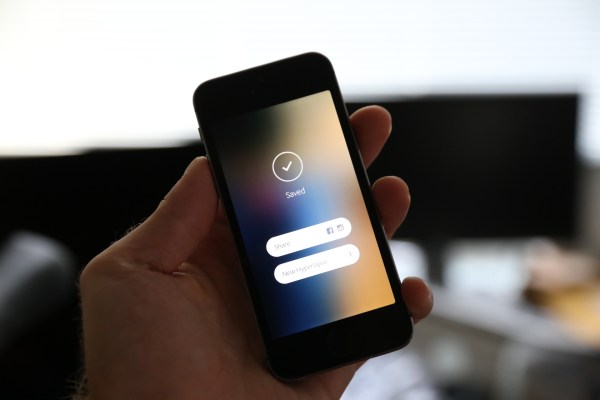Instagram has just launched a brand new standalone app called Hyperlapse, which focuses entirely on mobile video creation.
The app looks dead simple, but is actually doing a lot in the background. When you first open Hyperlapse, you’ll go through a very quick tutorial and are then sent straight into a full-screen camera. The button on the bottom starts and stops recording. Once you have recorded a video, the app gives you a single control over the content: speed.
Users can switch from 1x speed (a slower version) all the way up to 12x speed (super fast).
But beyond speed, the real draw here is the ability to shoot a steady video on mobile that appears professionally shot.
Generally speaking, image stabilization tech is processing-intensive to the point where it really isn’t feasible on mobile. However, by using the gyroscopes in the phone itself, the Instagram team used algorithms to calculate the movements of the phone and correct it in the shot. They’re able to get away with this by using a cropped portion of the massive resolution available in your phone’s camera, leveraging the extra pixels of the sensor to stabilize the view.
The end result is an app that creates beautiful, souped-up videos that look and feel as though they were shot by professionals using expensive equipment.
Without a doubt, the technology itself is impressive. And the execution isn’t all that bad, either.
Instagram chose to let Hyperlapse stand as its own app, rather than integrating it into the main Instagram app. This makes sense given the fact that such a great feature would be buried within Instagram proper, either upsetting the loyal users who don’t like it or hiding from users who might love it.
That said, Hyperlapse doesn’t have its own feed. When you complete a video, you can either send it directly to Instagram or Facebook through an automatic app switch on your phone. It’s also automatically saved on your phone’s camera roll. This means that there is no single place for a person to watch a feed of Hyperlapse videos, just like there’s no dedicated video-only or photo-only feed for Instagram.
From a business perspective, it’s no surprise that Instagram and Facebook want to push all the content created with Hyperlapse onto their own massive networks, as opposed to opening up yet another place for content to live, away from their existing users. However, I’ve always felt that video never belonged on Instagram in the first place.
[gallery columns="5" ids="1048697,1048698,1048699,1048700,1048701"]
For a long time, the biggest hurdle to creating the “Instagram for Video” was the fact that it was so difficult to film a compelling, beautiful video on a smartphone. The entrance of HD video on mobile changed that, but then image stabilization got in the way. Now, Hyperlapse solves the problem of image stabilization (and bravo!), but it doesn’t change the issues around consuming mobile video.
Instagram is all about simplicity. Pre-set filters take the place of a tedious editing process, and a few buttons take the place of actually going to a bunch of different apps and uploading the picture. You can comment if you wish, but a double-tap to like will do the trick, too. From start to finish, the process is centered around simplicity.
The same was true for Instagram’s consumption experience before video. It was the ultimate time sink. Users could open up the app during any lull, whether they were meant to be paying attention during a meeting or sitting on a bus or at a dinner with friends. Almost all the photos were pretty (because that’s the point) and if you didn’t like one, you merely had to flick your thumb to get to the next. The bits of content were bite-sized and silent.
Video changed all that. Not only was it harder to capture beauty for an extended period of time (15 seconds) as opposed to a single moment, but it was intrusive and sometimes startling to have a video pop up out of the blue. It took time to decide whether or not it was actually worth watching — up to 15 seconds, sometimes.
While I still don’t care for Instagram video, Hyperlapse feels like something truly new in the mobile video landscape. Videos made on the new app and sent to Instagram will undoubtedly up the Instagram Video game on the whole, as Hyperlapse clips are silent by default and are steady and engaging even without filters.
However, I do think the app is interesting enough that power users would enjoy a feed where they can take inspiration from other Hyperlapsers.
All that said, Hyperlapse is potentially the coolest thing Instagram has done since building Instagram.
